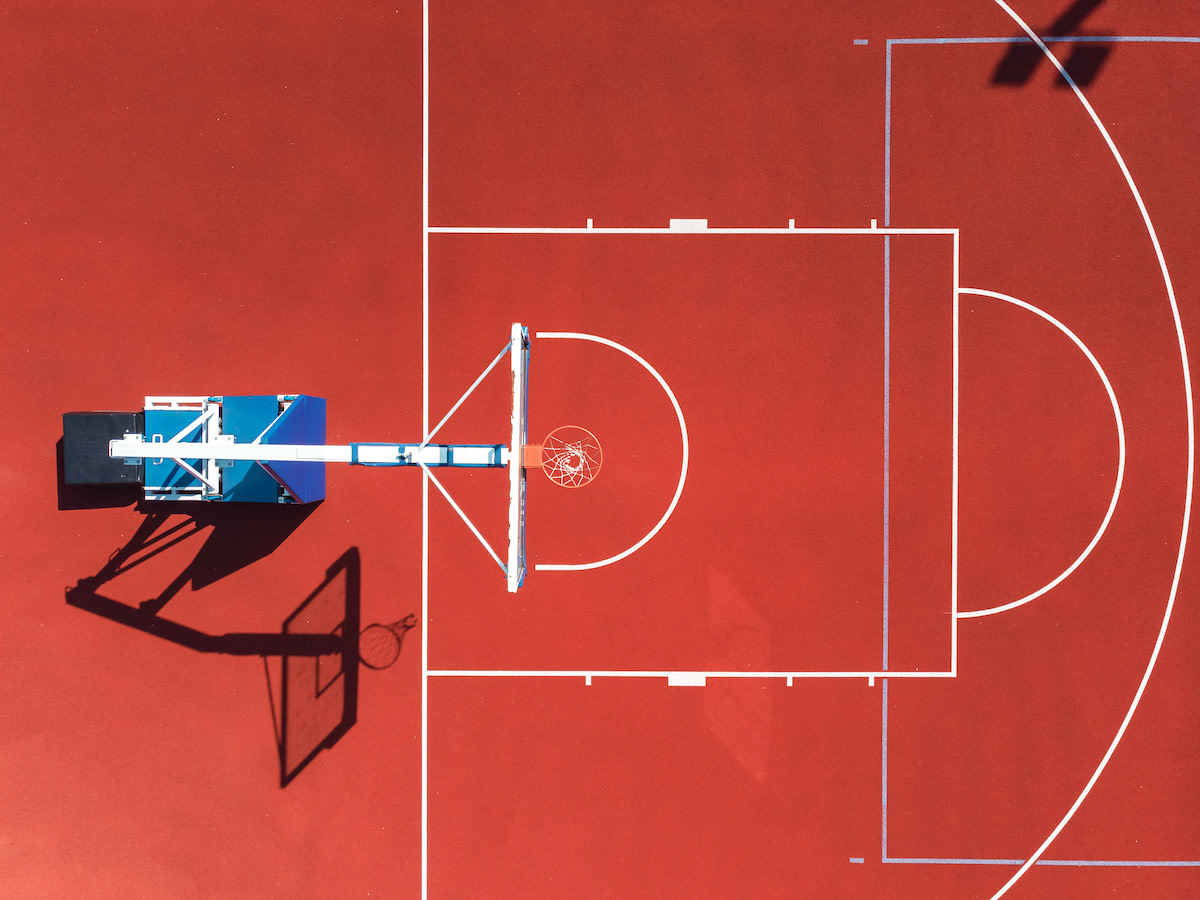Half-Court Basketball: 4 Rules for Half-Court Basketball
Written by MasterClass
Last updated: Oct 5, 2021 • 3 min read
Learn more about how honing your skills on a smaller-sized, half-court can help you take your basketball game to the next level.
Learn From the Best
What Is Half-Court Basketball?
Half-court basketball takes place on half of a regulation full-court or on a smaller outdoor basketball court. It is a useful variation of the game if you have fewer players or limited space. The International Basketball Federation (or FIBA) and the Big3 (a three-on-three basketball league) have also used the half-court at the professional level, such as for three-on-three tournaments and other special games.
Advantages of Half-Court Basketball
Teams of five players sometimes play half-court basketball games in practice situations to prepare for set offensive plays and zone defenses. When there are four or fewer players per team, a half-court game will provide players with enough space for ball movement in a less congested environment. This smaller basketball court size can help train an offensive player to dribble and pass with more control, while simultaneously improving a defensive player’s one-on-one defense and rotations.
What Are the Dimensions of a Half-Court in Basketball?
Half-court dimensions can ultimately vary at any level of play. There are half-court kit options with customizable basketball court flooring or surfacing that contractors can use to build a half-court that will fit the exact needs and limitations of a given space, such as a backyard basketball court. That said, there are some general dimension ranges you will see in half-court basketball, including:
- Free throw lane dimensions: The rectangle area from the free throw line (or foul line) to the baseline is commonly known as “the key.” A Women’s National Basketball Association (WNBA) key is sixteen feet wide and nineteen feet long. National Collegiate Athletic Association (NCAA) basketball and high school basketball keys are narrower by two feet.
- Overall dimensions: At professional and college basketball levels, both the men’s and women’s half-court measures fifty feet wide by forty-seven feet long. For high school half-court basketball, court dimensions are five feet shorter.
- Three-point distance: The three-point line is measured from the center of the basketball hoop to the outside edge of the three-point arc painted on the floor. NBA court three-point lines are the farthest out at twenty-three feet and nine inches. The arc of a high school basketball court has the closest line distance to the hoop, measuring nineteen feet and nine inches from the center of the rim.
4 Rules for Half-Court Basketball
The half-court format has made the leap from a popular recreational pastime to a three-on-three model which players participated in at the 2020 Olympic Games. Half-court basketball rules, which FIBA established, differ from the rules of the full-court model to organize the flow of the game on a smaller court. Here are some key areas in which half-court basketball rules differ significantly:
- 1. Clearing the ball: The most notable rule difference between full-court and half-court games is the “clear the ball” rule. If the defensive team gains ball possession by way of a turnover or the rebounding of a missed field goal attempt from the opposing team, they must clear the ball by dribbling or passing outside the arc before their offensive possession can begin.
- 2. Coin flip: In a traditional game taking place on a full basketball court, opposing teams square off at mid-court for a “jump ball” (in which a referee tosses a basketball between two players who jump for it) to establish initial possession of the ball. Since this occurs at the half-court line (the out-of-bounds line in half-court games), a coin toss instead decides first possession.
- 3. Ones and twos: In a full-size court game, shooting hoops from behind the three-point line equals three points for each pass through the basket. In a half-court game, the same successful field goal is worth two points. Successful shots from within the arc each equal one point. The same point format applies to the number of free throws permitted after a foul. After the scoring of each point, the non-scoring team inbounds the ball by passing it to a teammate beyond the arc from the baseline, under the hoop.
- 4. Time limit: Unlike NBA games that have four quarters, each totaling twelve minutes, and a twenty-four-second shot clock, half-court games limit themselves to a single ten-minute period and a twelve-second shot clock. The shot clock limit forces the offensive team to make a field goal attempt (the ball must make contact with the rim of the basket) within the time limit or they will incur a violation that results in a turnover.
Learn More
Want to become a better athlete? The MasterClass Annual Membership provides exclusive video lessons from the world’s best athletes, including Stephen Curry, Tony Hawk, Serena Williams, Wayne Gretzky, Misty Copeland, and more.
